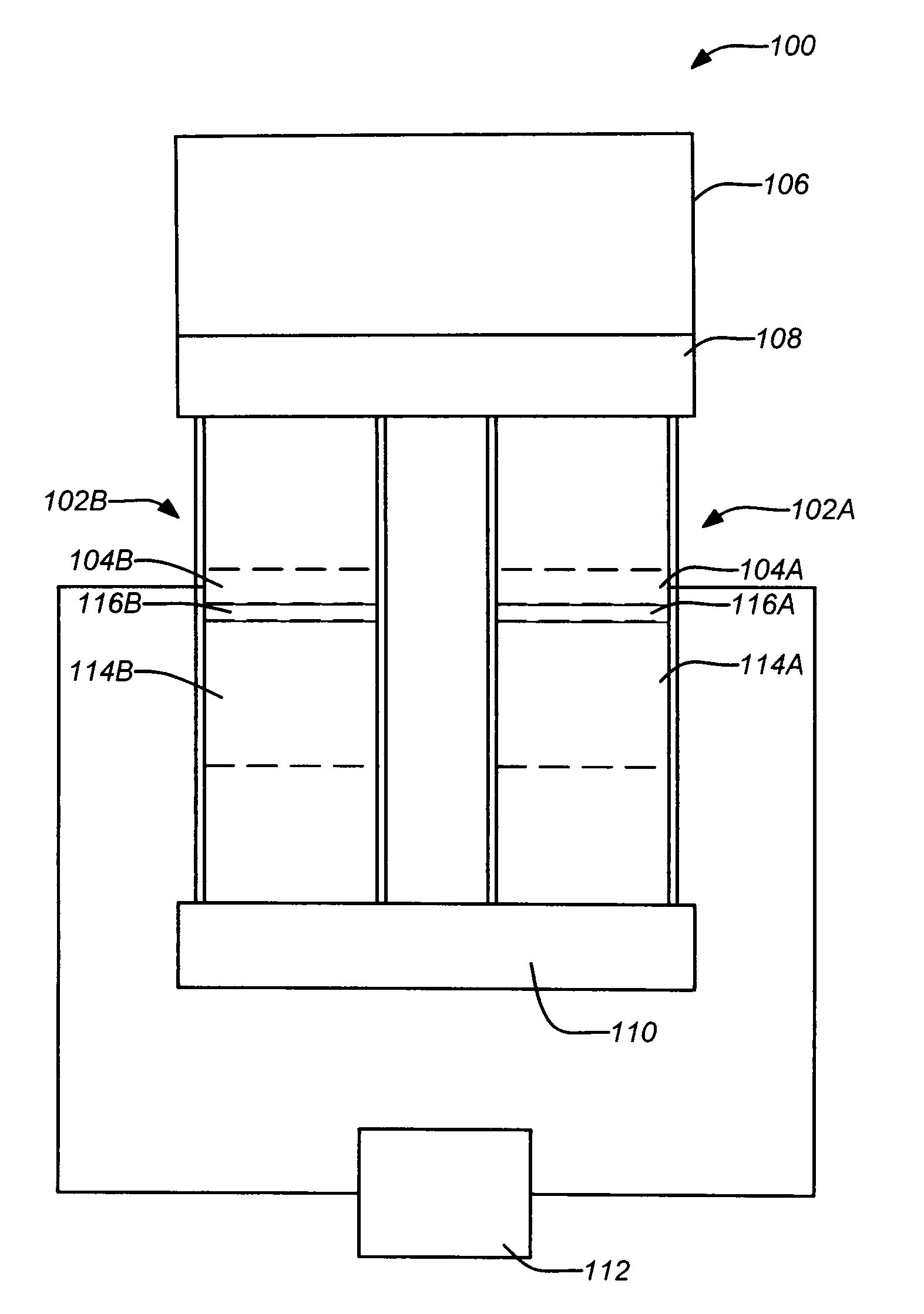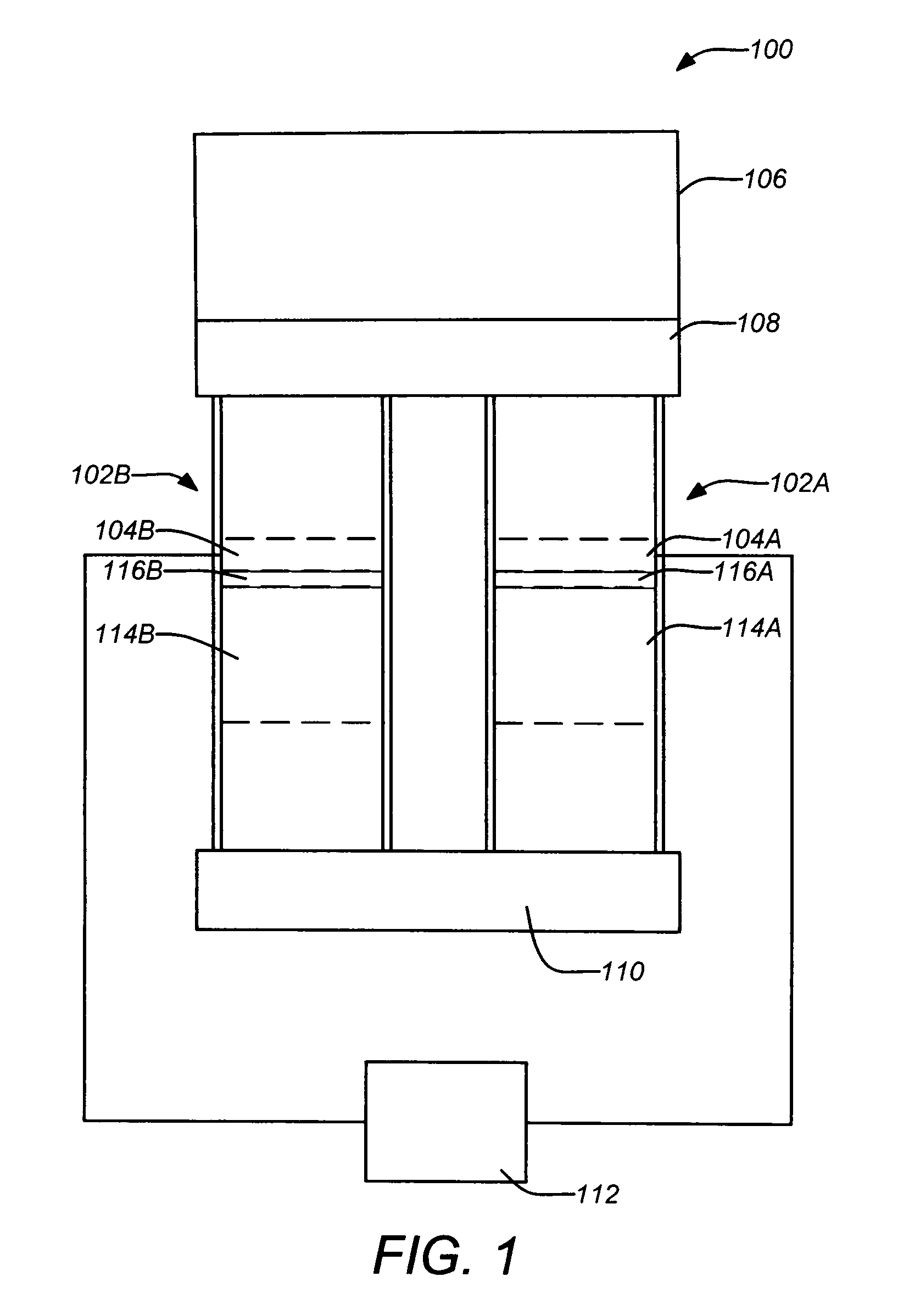Electrical contacts for skutterudite thermoelectric materials
a technology electrical contacts, which is applied in the direction of thermoelectric device junction materials, thermoelectric device manufacture/treatment, electrical apparatus, etc., can solve the problems of thermal stability limitations of skutterudite thermoelectric materials previously reported, internal electrical contact interfaces to the thermoelectric materials may fail, and achieve the effect of slow degradation of mechanical and electrical characteristics of the devi
- Summary
- Abstract
- Description
- Claims
- Application Information
AI Technical Summary
Benefits of technology
Problems solved by technology
Method used
Image
Examples
Embodiment Construction
[0028]1. Overview
[0029]As previously mentioned, embodiments of the present invention is directed to the fabrication of advanced high temperature interfaces, e.g. for electrical contacts, in skutterudite thermoelectric devices, such as thermoelectric power generation devices. Such devices typically require the joining of several dissimilar materials. In order to achieve a device capable of operating at elevated temperatures across a large temperature differential, a number of diffusion bonding and / or brazing processes may be employed. A typical thermoelectric device may comprise a heat collector / exchanger, metal connector interfaces on both the hot and cold sides, n-type and p-type conductivity thermoelectric elements, and cold side hardware to couple to the cold side heat rejection element as will be understood by those skilled in the art.
[0030]Embodiments of the invention may be applied to thermoelectric devices including a skutterudite thermoelectric material comprising a diffusib...
PUM
| Property | Measurement | Unit |
|---|---|---|
| thick | aaaaa | aaaaa |
| temperatures | aaaaa | aaaaa |
| thick | aaaaa | aaaaa |
Abstract
Description
Claims
Application Information
 Login to View More
Login to View More - R&D
- Intellectual Property
- Life Sciences
- Materials
- Tech Scout
- Unparalleled Data Quality
- Higher Quality Content
- 60% Fewer Hallucinations
Browse by: Latest US Patents, China's latest patents, Technical Efficacy Thesaurus, Application Domain, Technology Topic, Popular Technical Reports.
© 2025 PatSnap. All rights reserved.Legal|Privacy policy|Modern Slavery Act Transparency Statement|Sitemap|About US| Contact US: help@patsnap.com



